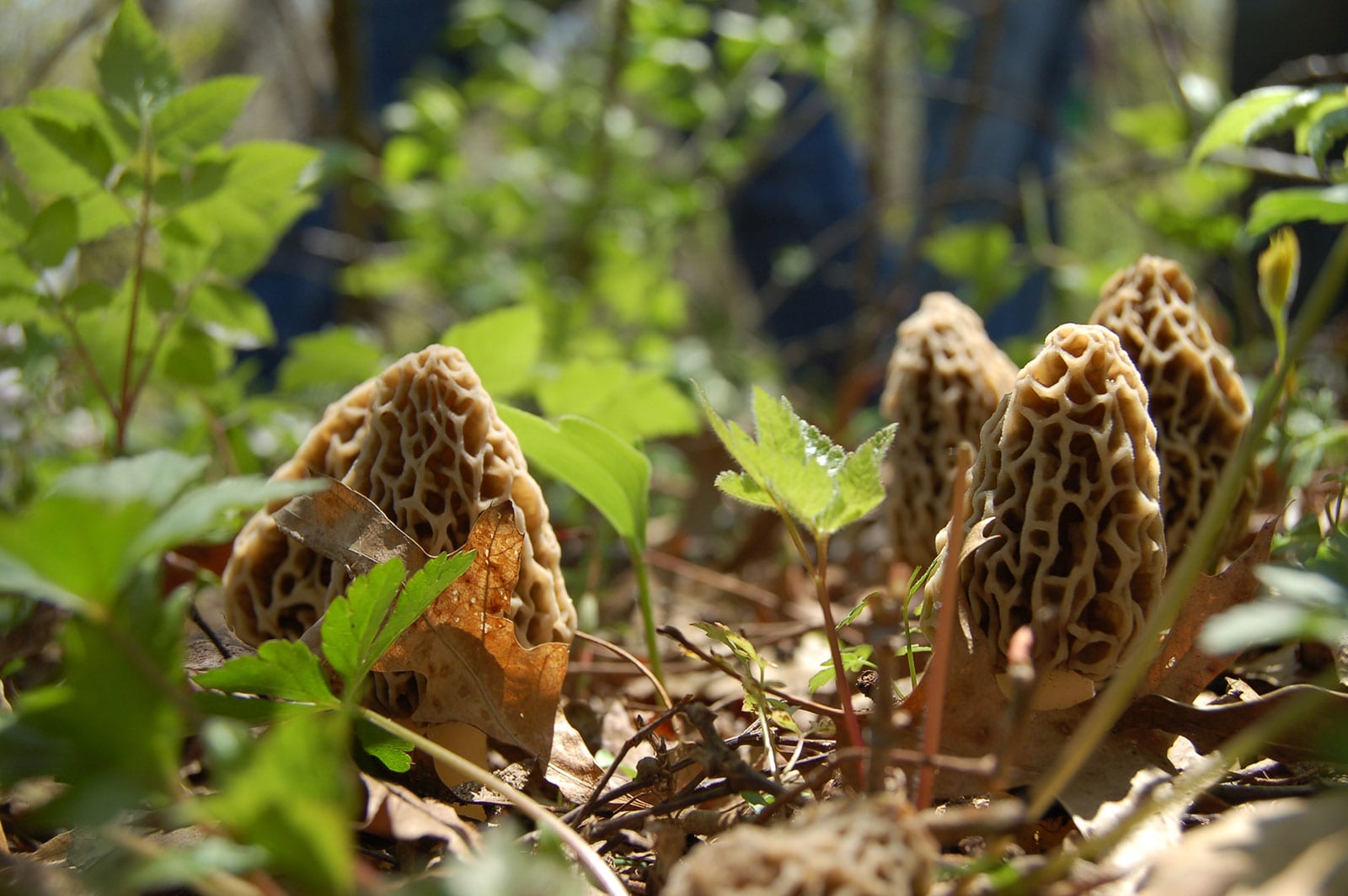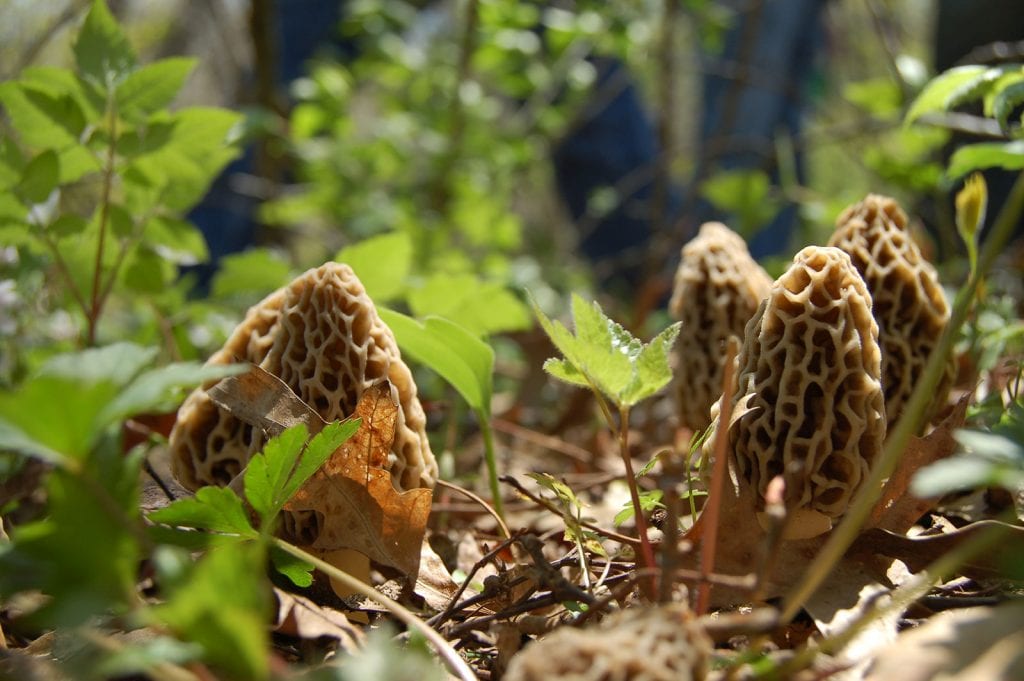Physical Address
304 North Cardinal St.
Dorchester Center, MA 02124
Physical Address
304 North Cardinal St.
Dorchester Center, MA 02124


It seems like this would be a simple question to answer, however, as with all things mushroom and specifically morel related, it is not so straightforward. There are 18 types of morels and each one has its’ preference for location, environment, and tree association. However, they almost always grow on the ground under trees, which is helpful in the search for these elusive gems. They do not ever grow on trees and rarely on wood. Morels will occur as solitary individuals or in scattered groups or clusters in late April, May, or early June, depending on the region. If you see one, stop immediately and look around because you are likely to see more. They tend to blend right in with their surroundings so look carefully and closely. Morels, in general, like dead or dying trees so seek out old growth areas for the best success.
The Common Morel
The most familiar morel, Morchella americana, also referred to as M. esculentoides, is a yellow morel found widespread over the east and west coasts of North America. It starts off as gray or white in color and as it ages it turns yellowish. This morel prefers hardwoods like ash, elm, aspens, sycamores, and balsam poplars, as well as apple, cherry, and pear trees. Old apple orchards are a great place to look. On occasion, this morel has been found under conifers, specifically white pine. When people talk about foraging morels, this is most likely the one they are seeking. It is by far the most well known.
Yellow Morels
In addition to the Common Morel, there are four other types of yellow morels. They have different ranges and tree associations which can help in discovering them.
M. cryptica is a look-a-like to the Common Morel and can be found in the Great Lakes region. Like its’ counterpart, it also is most likely to be found under hardwoods like ash, elm, tulip, and apple trees.
M. virginiana grows exclusively in the southern US under tulip trees. While it has a smaller range than most morels, its affinity for tulip trees makes it easier to seek out.
M. diminutiva appears commonly throughout the eastern US, east of the Great Plains. Its range starts from the Great Lakes and goes southward. This morel also can be found under hardwoods like ash, hickory, oak, and tulip trees.
M. prava ranges from the northern US up through Canada. It is commonly found in these areas in association with hardwoods and conifer trees and usually in sandy soil around water. They seem to prefer oak trees and pine trees and being near bodies of water, although it can also be found in mountain forests.
Black Morels
There are twelve varieties of black morels. Three can be found in the eastern/northeastern US while all the others are specific to the north/northwest US.
M.angusticeps is the standard black morel found in eastern North America. Look under hardwoods, specifically white and green ash, cherry, aspen, and tulip trees.
M.septentrionalis is a morel that defies the standards of morels and sometimes grows from rotting wood. It seems to prefer wood debris and is most likely to be found under big-toothed aspen trees, ash trees, and other hardwoods. This morel is only found in the northern US, above the 45th parallel from Michigan to New York.
M.brunnea is a black morel found in western North America under hardwood trees, like oak and Pacific Madrone. It has also been documented under conifer trees.
M.importuna is another type of morel that defies the standards. It will grow under hardwoods, however, is most often found away from trees. This morel likes gardens, planters, and other landscaped sites in generally urban environments. If you live in a city in the northwest, keep an eye out for this one! It is quite large and hard to miss. It has also been known to pop up in late winter as well as early spring.
M.snyderi grows in western North America in association with conifers. It prefers ponderosa pine, white fir, and Douglas fir. It starts off as yellow and then transitions to black, making it a fun morel species to find and identify.
M.frustrata deserves its’ species name because it is a black morel that is yellow in color. It appears in western North America under hardwoods like oak and Pacific Madrone as well as under conifers like sugar pine, white fir, Douglas fir, and ponderosa pine.
Burn-Site Black Morels
The next four types of black morels, M. sextelata, M. septimelata, M.tomentosa, and M. capitata are commonly called burn-site morels because they grow exclusively in areas that recently experienced fires. All four can be found in western North America in conifer burn sites. They will show up in the spring following the fire and then possibly in smaller numbers in the same spot for several years. To find these morels, seek out recent burn sites in conifer forests.
“Half-Cap” Black Morels
The last two types of black morels are distinguished by their odd caps compared to the other morel species. They are indistinguishable from each other in looks, however, they prefer very different ecosystems and are separated in range by the Rocky Mountains.
M.Populiphila grows in northwestern North America under black cottonwood trees in river bottoms. M.Punctipes appears east of the Rocky Mountains under hardwoods, like ash, oak, apple, and tulip trees.
The White Morel
The white morel, M.rufobrunnea, is an oddity in that it has white ridges, dark pits, and bruises a reddish brown color. It also grows in unexpected places, preferring disturbed ground like gardens and planters, mulch beds, and on roadsides.
To be successful foraging morels, it is important to identify the ones that grow in your area and then seek out those trees with which they associate. Sometimes it seems like these treasures don’t want to be found, however, with a little bit of know-how and perseverance, you are sure to discover the morels!